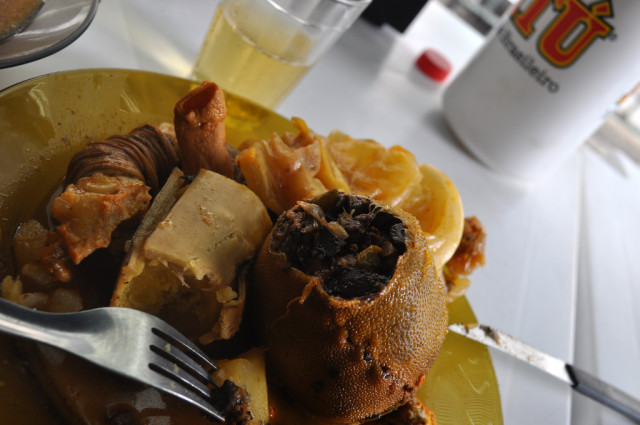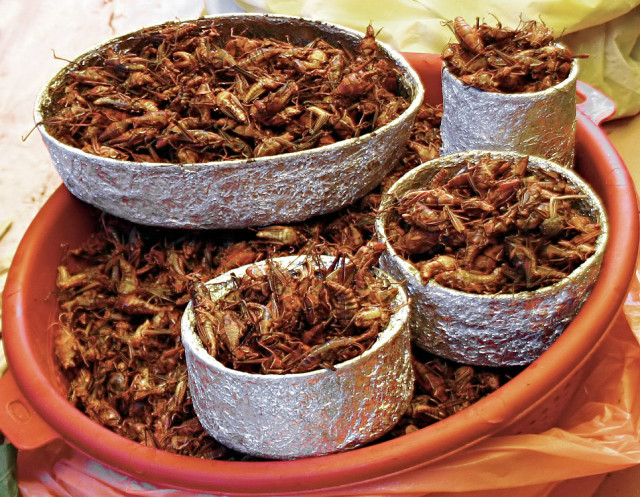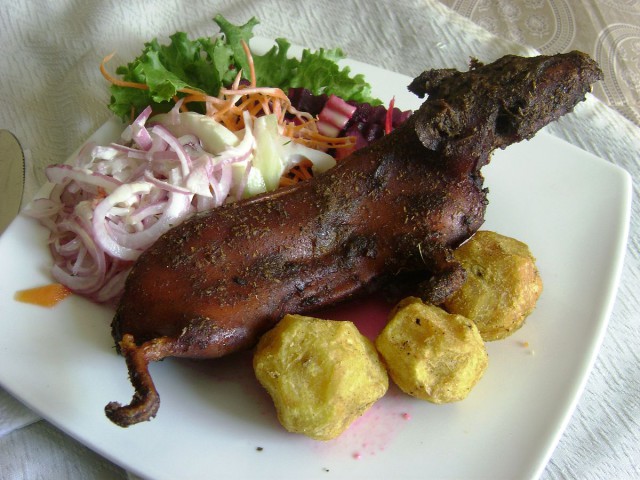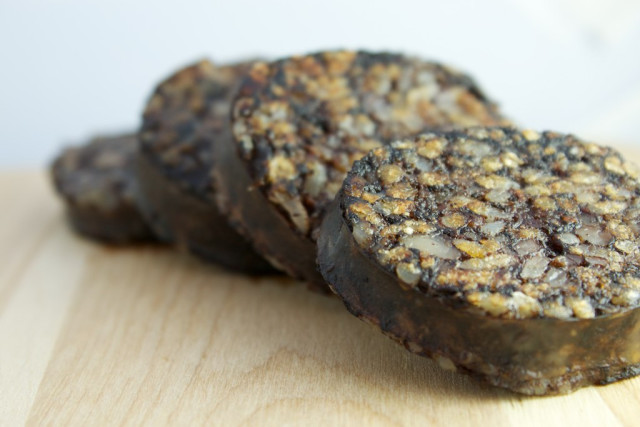First off, let me grant that “adventurous” is a relative term. If you’re growing up in Iceland, for example, and rotted shark (hakárl) is part of your culture, it’s no biggie. But for most of the rest of us, that would qualify as “adventurous” eating. So over the course of my travels, these are the 17 of the more offbeat local foods I’ve encountered in places Iberia flies (for the most part I’m leaving out sweetbreads, brains, marrow, tripe, and other internal organs enjoyed by many in various countries).
OK, forks up!
Brazil
Buchada is a delicacy of northeastern Ceará state – kid goat viscera and blood, seasoned and cooked in a goat stomach. The locals find it something to bleat about, for sure.
Chile
Ubre asado is roasted cow udder. Spongy and smoky when grilled over an open fire – udderly delicious.
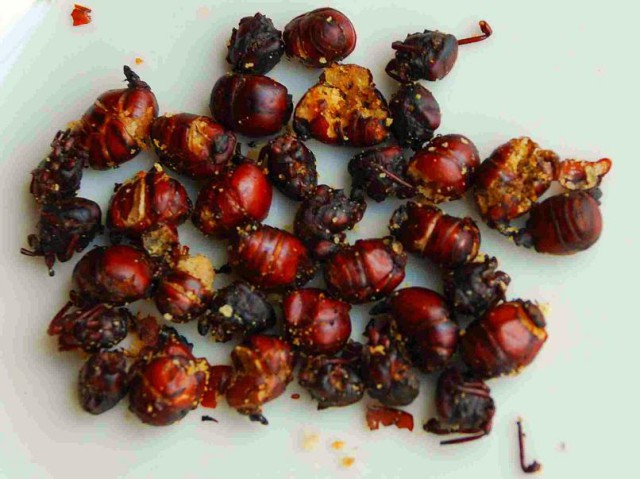 photo: Sascha Grabow
photo: Sascha Grabow
Colombia
Hormigas culonas are translated as “big-arsed ants”, these formic nibbles come down from the pre-Columbian Guane peoples and are still enjoyed – toasted and salted – in various parts of the country, particularly around Bucaramanga Santander. They’re generally seasonal, though, limited to spring.
 photo: Shardan
photo: Shardan
Italy
011
If you make it down to Sardinia, have a bit of casu marzu (above), a pecorino-derived sheepsmilk cheese with ammoniac overtones – given extra zing by live insect larvae! Hey, it doesn’t seem to bug the Sardinians.
One recipe you’ll probably never see on an Italian menu outside Italy is cibreo, a pasta sauce containing cockscombs and wattles (the red jiggly things adorning a rooster’s head).
Mexico
Especially in Oaxaca and the north many Mexicans just jump for chapulines – fried crickets, especially popular in summer and fall. Sometimes plain, sometimes dressed up with tacos, cheeses, and other dressings.
Caviar fans might be interested to try “insect caviar”, a local moniker for escamoles – larvae of certain ants crawling around certain agave plants. It’s popular in the Mexico City region, and can be prepared in butter, olive oil, garlic, etc. Comes across a little like cottage cheese with a slightly nutty flavour.
Another agave creepy-crawly goes down the hatch in central Mexico, too: gusanos de maguey (maguey worms) are essentially caterpilars which are sometimes eaten alive and raw, but more often braised or deep fried or braised, seasoned with salt, lime, and sometimes sauce, and served in a tortilla (this is also one of the worms you’ll find at the bottom of bottles of mescal).
Finally, corn smut, anyone? No, not maize porn but rather a yeastlike fungus that grows on corn, huitlacoche is preserved and used as an ingredient in tacos, quesadillas, tamales, and soups.
Peru/Ecuador
Cuy are a kind of Andean guinea pig served whole (head and feet included!) and most often fried – which can certainly be a bit off-putting in appearance to some. And yes, it does to many taste like chicken.
Spain
In the land of the bullfight, there are of course bulls, and where there are bulls, there are criadillas – bull’s testicles, served breaded and fried. Not a common sight in restaurants, but available at some butchers’.
The most common Spanish food not part of most anglophones’ culinary repertoire is morcilla (blackish blood sausage), found throughout the country but considered especially good in Burgos – which involves pig’s blood and rice.
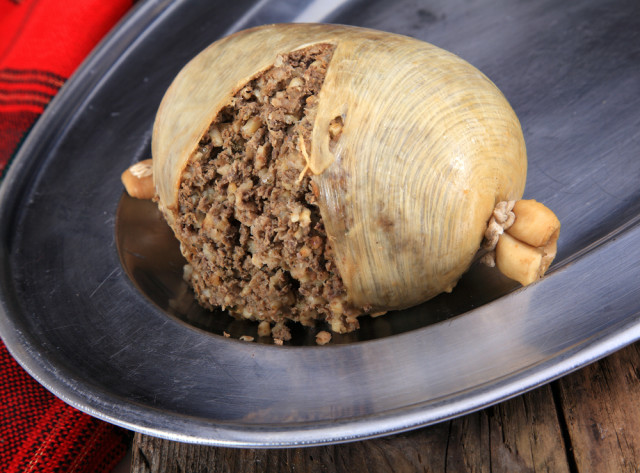 photo: Soemardjan
photo: Soemardjan
United Kingdom
If you thought Brazil’s goat offal in a goat stomach was, well, stomach churning, don’t forget that Scotland has its own version: haggis,which is sheep’s heart, liver and lungs, minced, mixed with oatmeal and spices, and cooked inside a sheep’s stomach.
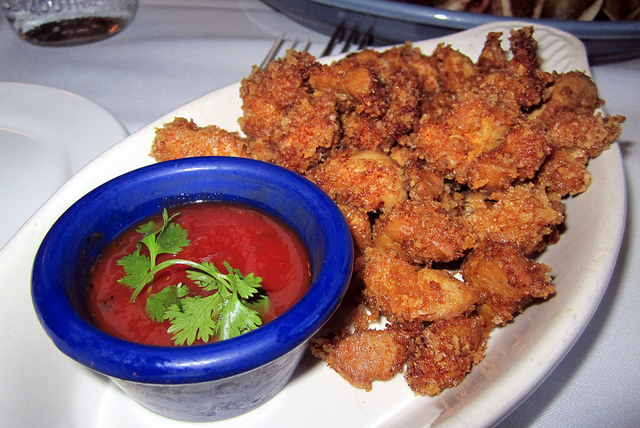 wallyg/Flickr
wallyg/Flickr
USA
Alligator is a not uncommon menu item in several coastal states, particular Florida (home of the Everglades) and Louisiana (bayou country), served in sausage, breaded nuggets, and stews. You’d think it might have a bit of, er, bite to it – but unless it’s tarted up with Cajun spices, the meat is actually extremely bland.
Conch is reasonably common in Florida, especially South Florida and the Keys – although since it’s endangered in the States, most of what you find is important from the Bahamas and the Caribbean. Also fairly bland and often a bit rubbery, it most commonly takes the form of conch fritters, cracked conch (larger fried strips), and occasionally conch steaks.
In addition, America’s West has its own version of criadillas: Rocky Mountain oysters, breaded and served with a dipping sauce.
Finally, on the country’s Pacific Northwest coast, a freakishly large and long-lived clam called geoduck (pronounced goo-ee-duck), prepared in all sorts of ways, from chowder to fritters, to Asian stir-fry.



